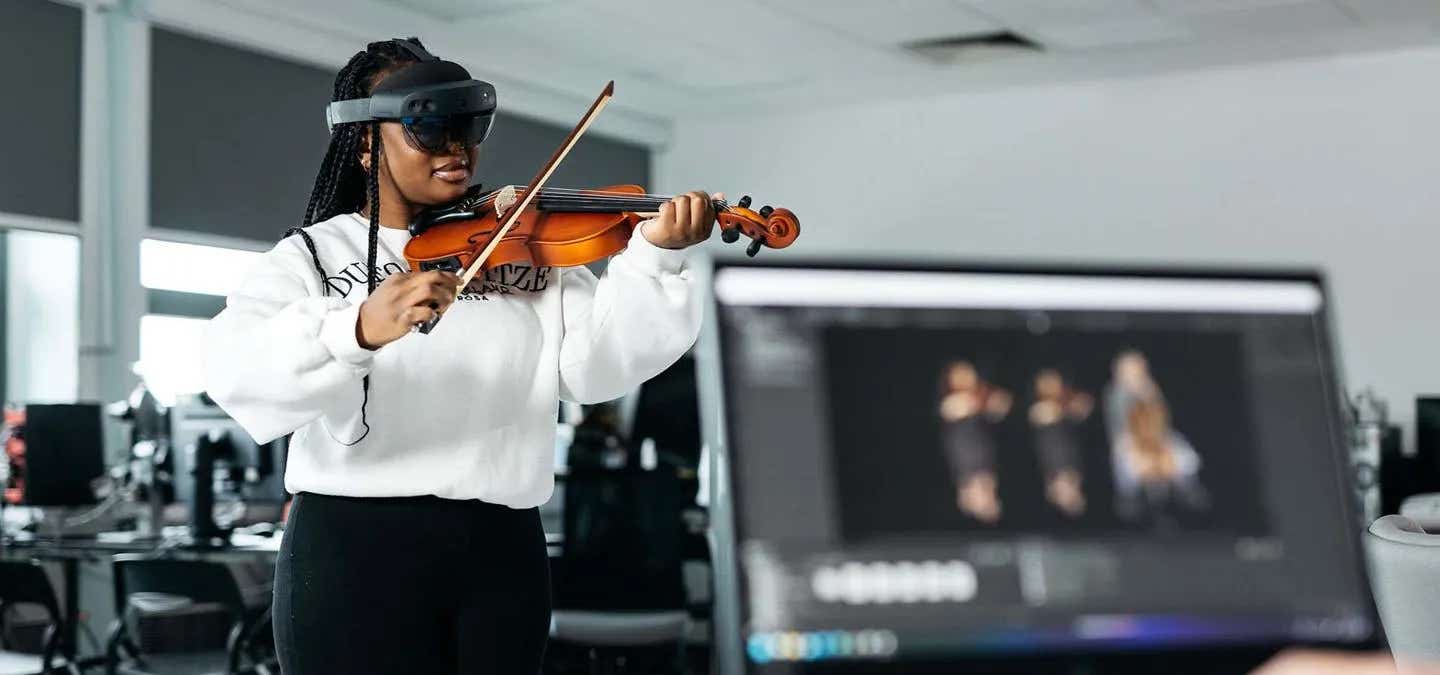“Zoom fatigue”: Exhaustion caused by video conferencing proven for the first-time
In the wake of the COVID-19 pandemic, a surge in virtual interactions has given rise to a novel challenge: video conference fatigue

[Nov. 16, 2023: JD Shavit, The Brighter Side of News]
In the wake of the COVID-19 pandemic, a surge in virtual interactions has given rise to a novel challenge: video conference fatigue, commonly referred to as Zoom fatigue. (CREDIT: Creative Commons)
In the wake of the COVID-19 pandemic, a surge in virtual interactions has given rise to a novel challenge: video conference fatigue, commonly referred to as Zoom fatigue. This exhaustion, characterized by feelings of weariness and disconnection stemming from prolonged or unsuitable video-based communication, has long been a subject of inquiry, primarily relying on user surveys and self-assessments.
However, a groundbreaking study led by René Riedl from the University of Applied Sciences Upper Austria/Campus Steyr and Gernot Müller-Putz from Graz University of Technology has recently provided neurophysiological evidence for the phenomenon of videoconference fatigue.
Funded by the Austrian Science Fund FWF and executed under the "Technostress in Organizations" project, this interdisciplinary research team embarked on a neuroscientific exploration into videoconference fatigue within the context of online university lectures.
Their investigation involved students participating in lectures conducted both in a traditional lecture hall setting and via video conferencing.
Related News
By comparing these two experimental conditions, the team sought to examine and quantify the impact of video conferences on fatigue through objective neurophysiological measurements, specifically utilizing electroencephalography (EEG) and electrocardiography (ECG), in conjunction with subjective assessments from participants.
The objective findings gleaned from EEG and heart rate variability parameters, combined with the subjective accounts of participants, unveiled a striking revelation. A mere 50-minute video conference-based lecture exerted significantly greater fatigue on the subjects compared to an equivalent lecture conducted in a traditional lecture hall, where educators and students interacted face-to-face.
This groundbreaking study has been published in the esteemed journal Scientific Reports, underlining the gravity of its findings.
Study Protocol. A total of 35 subjects participated in the study, divided into two groups (within-subjects design). One group attended the videoconference lecture first and then the face-to-face lecture a week later, while the other group did the opposite. (CREDIT: Scientific Reports)
"A better understanding of videoconference fatigue is crucial, as this phenomenon profoundly impacts individual well-being, interpersonal relationships, and organizational communication," emphasizes René Riedl. Gernot Müller-Putz elaborates further, asserting that "a comprehensive comprehension of the underlying psychological and physiological mechanisms is indispensable for the development of effective strategies to mitigate the detrimental effects of videoconference fatigue."
These revelations highlight the urgent need for greater awareness and mitigation strategies to alleviate the growing problem of video conference fatigue in an increasingly digital world. The research conducted by Riedl and Müller-Putz provides vital insights into the implications of widespread virtual interactions, particularly as they pertain to the well-being of individuals and the dynamics of modern communication.
Boxplots depicting the distribution of the BMIS adjective scores before and after each lecture (as denoted in the legend). Positive score refers to the total score of the positive mood adjectives. (CREDIT: Scientific Reports)
Beyond their groundbreaking study, Riedl and Müller-Putz play an instrumental role in advancing research and innovation at the intersection of neuroscience, information systems, and digitization.
Together with two colleagues from North America, they form the board of the Society for Neuro-Information Systems, a non-profit international scientific association headquartered in Vienna. This society is dedicated to promoting and supporting research endeavors in these converging fields, with the ultimate goal of enhancing user satisfaction and productivity when engaging with digital technologies.
Boxplots illustrating the distribution of the average over time EEG band power (Delta (D): first row, Theta (T): second row, Alpha (A): third row, Beta (B): fourth row) within participants for the videoconferencing (red) and the face-to-face (green) conditions. (CREDIT: Scientific Reports)
"A deeper comprehension of the neurophysiological processes within the bodies and brains of users is paramount to achieve these objectives," conclude the two scientists. Their commitment to unraveling the mysteries of videoconference fatigue and their broader mission to enhance the digital experience underscore the pivotal role that interdisciplinary research plays in shaping our evolving digital landscape.
In a world increasingly dependent on virtual interactions, their work serves as a beacon of hope, offering a path toward more sustainable and harmonious integration of technology into our lives.
For more science and technology stories check out our New Discoveries section at The Brighter Side of News.
Note: Materials provided above by The Brighter Side of News. Content may be edited for style and length.
Like these kind of feel good stories? Get the Brighter Side of News' newsletter.
Joshua Shavit
Science & Technology Writer | AI and Robotics Reporter
Joshua Shavit is a Los Angeles-based science and technology writer with a passion for exploring the breakthroughs shaping the future. As a contributor to The Brighter Side of News, he focuses on positive and transformative advancements in AI, technology, physics, engineering, robotics and space science. Joshua is currently working towards a Bachelor of Science in Business Administration at the University of California, Berkeley. He combines his academic background with a talent for storytelling, making complex scientific discoveries engaging and accessible. His work highlights the innovators behind the ideas, bringing readers closer to the people driving progress.



